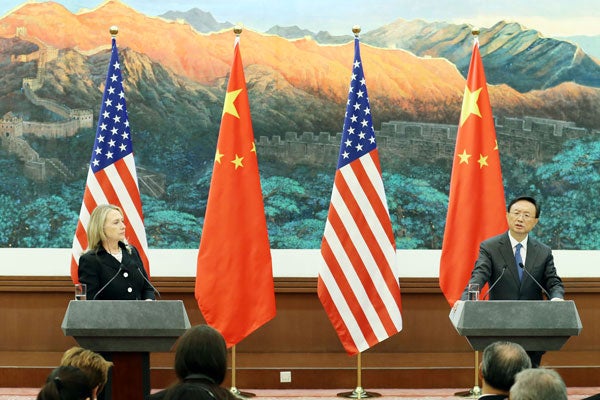Letting China See U.S. Military Capacities a Bad Idea
Dean Cheng /
United States Secretary of the Navy Ray Mabus has announced that the U.S. would “welcome” Chinese participation in the 2014 Rim of the Pacific (RIMPAC) exercises. These naval exercises, considered the world’s largest, involve over 40 vessels from some 22 nations. The People’s Republic of China (PRC) is one of the few Asian navies that is not involved.
The purpose of RIMPAC is to facilitate interoperability and familiarity among friends and allies. Not surprisingly, almost all of the nations involved in RIMPAC are military allies or close partners of the U.S. In 2010, for example, the participants included Australia, Canada, Chile, Colombia, France, Indonesia, Japan, Malaysia, Netherlands, Peru, South Korea, Singapore, Thailand, and the U.S.
Inviting the PRC to join RIMPAC, however, seems deeply problematic, because participation would potentially provide the People’s Liberation Army Navy (PLAN) with an excellent opportunity to study American military operations firsthand and from close proximity.
For the U.S., there is a question about whether we want to display our capacities and that of our allies and partners in front of members of the Chinese navy—at least some of whom, almost certainly, will be members of Chinese intelligence.
The types of operations typically exercised during RIMPAC include underway replenishment, anti-submarine warfare, anti-air warfare, and live-fire operations. Underway replenishment activities, which involve many large ships operating in very close proximity, are no mean feat. The U.S. is the unrivaled expert in this domain, and the Chinese are still learning. Is it in the American interest to give the Chinese front-row seats to such activities?
Also, carrier operations are a typical part of RIMPAC. With the addition of the carrier Liaoning to China’s armada, the PLAN would be most interested in quickly learning how to conduct sustained flight operations. This past week’s initial takeoff and landing of a J-15 fighter aircraft underscores how quickly, and how committed, China has been trying to learn this difficult set of skills.
For the American contingent, there is also a real question of whether participating in such an exercise with China would violate the law. Under the Fiscal Year 2000 National Defense Authorization Act (NDAA), the Secretary of Defense is prohibited from authorizing any military-to-military contact with the People’s Liberation Army (PLA) if that contact would “create a national security risk due to an inappropriate exposure” of the PLA to any of the following 12 operational areas:
- Force projection operations,
- Nuclear operations,
- Advanced combined-arms and joint combat operations,
- Advanced logistical operations,
- Chemical and biological defense or other WMD-related capabilities,
- Surveillance and reconnaissance operations,
- Joint warfighting experiments,
- Military space operations,
- Other advanced capabilities of the Armed Forces,
- Arms sales or military-related technology transfers,
- Release of classified or restricted information, and
- Access to any Department of Defense laboratory.
Military exercises, which play a key role in facilitating readiness, should not be subordinated to photo-ops. Nor should we believe that such interactions are a magic bullet for avoiding mutual misperceptions.
The decision to invite the Chinese to attend the 2014 RIMPAC exercises raises serious questions about how far the Obama Administration will go to placate and “reassure” Beijing. Participation in RIMPAC is one step too far. The attempt underscores the need to preserve the NDAA legal restrictions on U.S.–China military-to-military contact and the requirement for vigilant congressional oversight.

